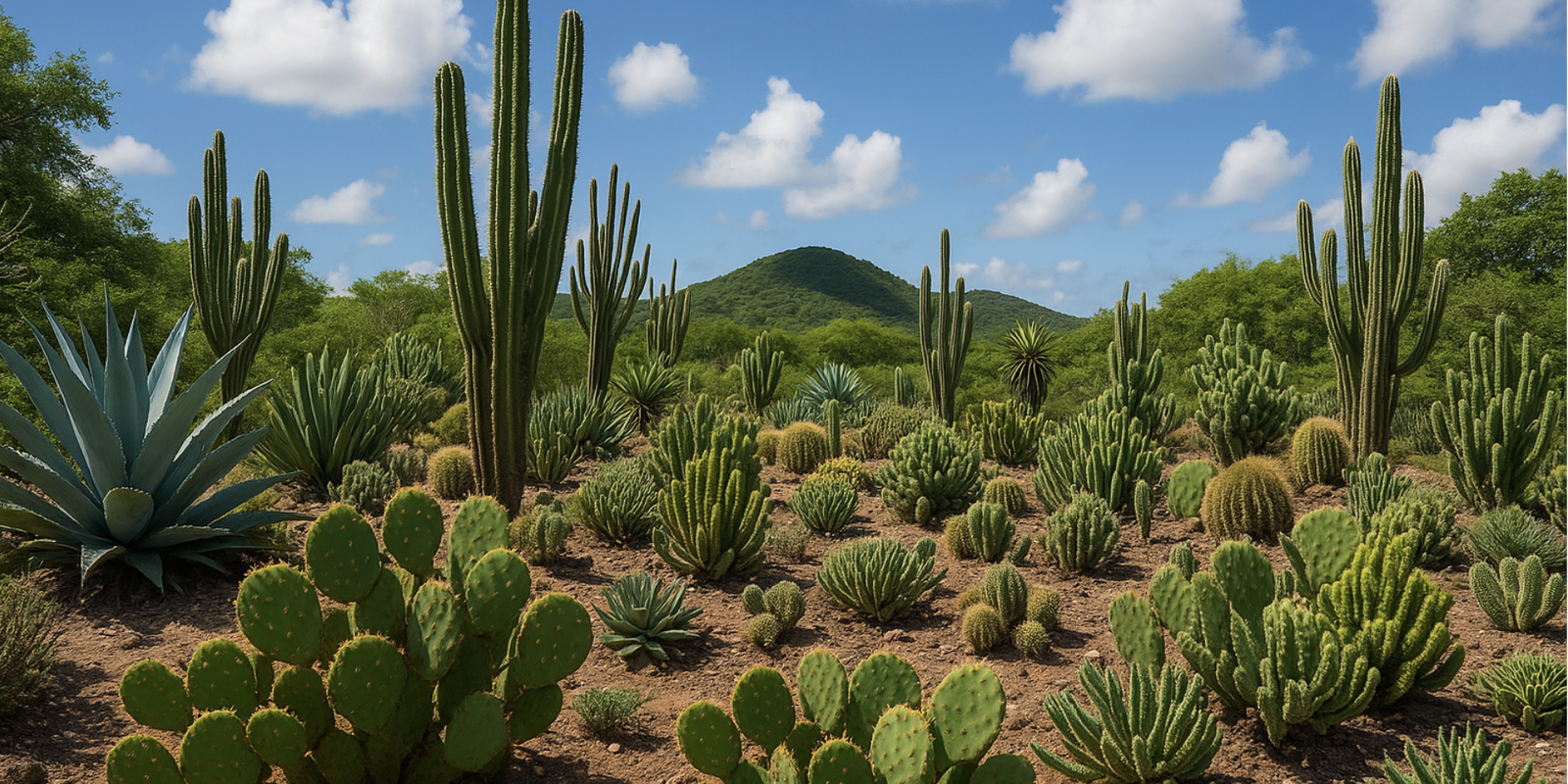Jamaica’s Amazing Cacti and Succulents
When you think of Jamaica, you probably picture lush rainforests, waterfalls, and tropical blooms. But the island also hides a lesser-known natural treasure—cacti and succulents thriving in its dry southern regions. These rugged plants may not get as much attention as orchids or hibiscus, but they are just as fascinating and uniquely Jamaican.
A Different Kind of Beauty
Jamaica’s cacti and succulents are built for survival. They grow in some of the island’s hottest, driest areas—like the Hellshire Hills, Portland Ridge, and sections of St. Elizabeth. These plants have adapted to extreme conditions by storing water in their leaves, stems, or roots. Their tough skins, spines, and compact shapes help them hold onto moisture and ward off hungry animals.
But don’t let their rugged look fool you. Many of these plants produce stunning flowers—vibrant bursts of red, pink, yellow, or white that stand out against the dry, rocky landscapes.
Native and Endemic Species
Some of Jamaica’s succulents and cacti can’t be found anywhere else in the world. For example:
-
Melocactus intortus – Known locally as Turk’s Cap Cactus, this round cactus is topped with a reddish “cap” that makes it look like it’s wearing a hat. It’s native to several Caribbean islands but has unique forms in Jamaica.
-
Pereskia aculeata – This climbing cactus may surprise you—it has leaves! It’s an early form of cactus that still carries many traits of leafy plants.
-
Consolea rubescens – Also known as Roadside Prickle, this tall, tree-like cactus is found in Jamaica’s dry coastal zones and has paddle-shaped pads that turn red with age.
-
Agave sobria and Agave caribaea – These spiky succulents resemble large rosettes and are used in dry landscaping. They’re slow-growing but dramatic.
Several of these species are endemic, meaning they grow naturally only in Jamaica. That makes them especially important to protect.
Where to See Them
If you want to explore Jamaica’s dryland flora, plan a visit to areas like:
-
Hellshire Hills – A limestone dry forest near Portmore, home to rare cacti and reptiles. Parts are protected, but much of the area is under threat from development and charcoal burning.
-
Portland Ridge – Located in Clarendon, this remote, dry region has some of the best examples of native succulents and cacti.
-
Dry Harbour Mountains – Though better known for other types of plants, this area has patches of succulents, particularly on rocky slopes.
-
Hope Botanical Gardens (Kingston) – For a more accessible experience, the cactus garden at Hope Gardens displays a range of local and imported species.
Why They Matter
These dryland plants are part of Jamaica’s ecological identity. They’re vital to preserving biodiversity and supporting wildlife. Certain birds, insects, and lizards rely on them for food and shelter. Their presence also helps stabilize soil and prevent erosion in fragile dryland ecosystems.
In a world facing climate change and water scarcity, cacti and succulents are models of resilience. They require little water, thrive in poor soil, and can handle heat and drought—qualities that make them ideal for sustainable gardening and landscaping in the Caribbean.
Growing Your Own
Want to bring some of this desert charm into your yard or garden? Cacti and succulents are surprisingly easy to grow in Jamaica. All they need is full sun, good drainage, and minimal watering.
Try species like Aloe vera, Agave, or local varieties of Opuntia (prickly pear). Plant them in raised beds or rock gardens. Use gravel or coarse sand to improve drainage. And don’t overwater—these plants hate soggy roots.
Jamaica’s cacti and succulents may not be the flashiest plants, but they are survivors—beautiful in their own way, uniquely adapted to their environment, and a reminder that even the driest corners of the island hold life worth celebrating.









